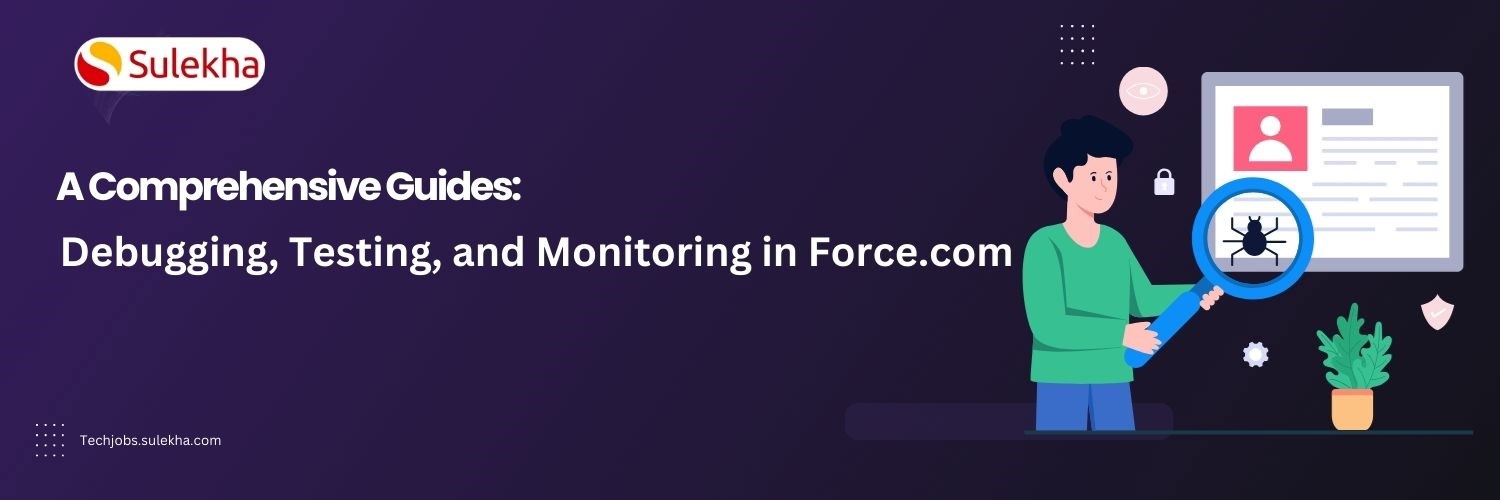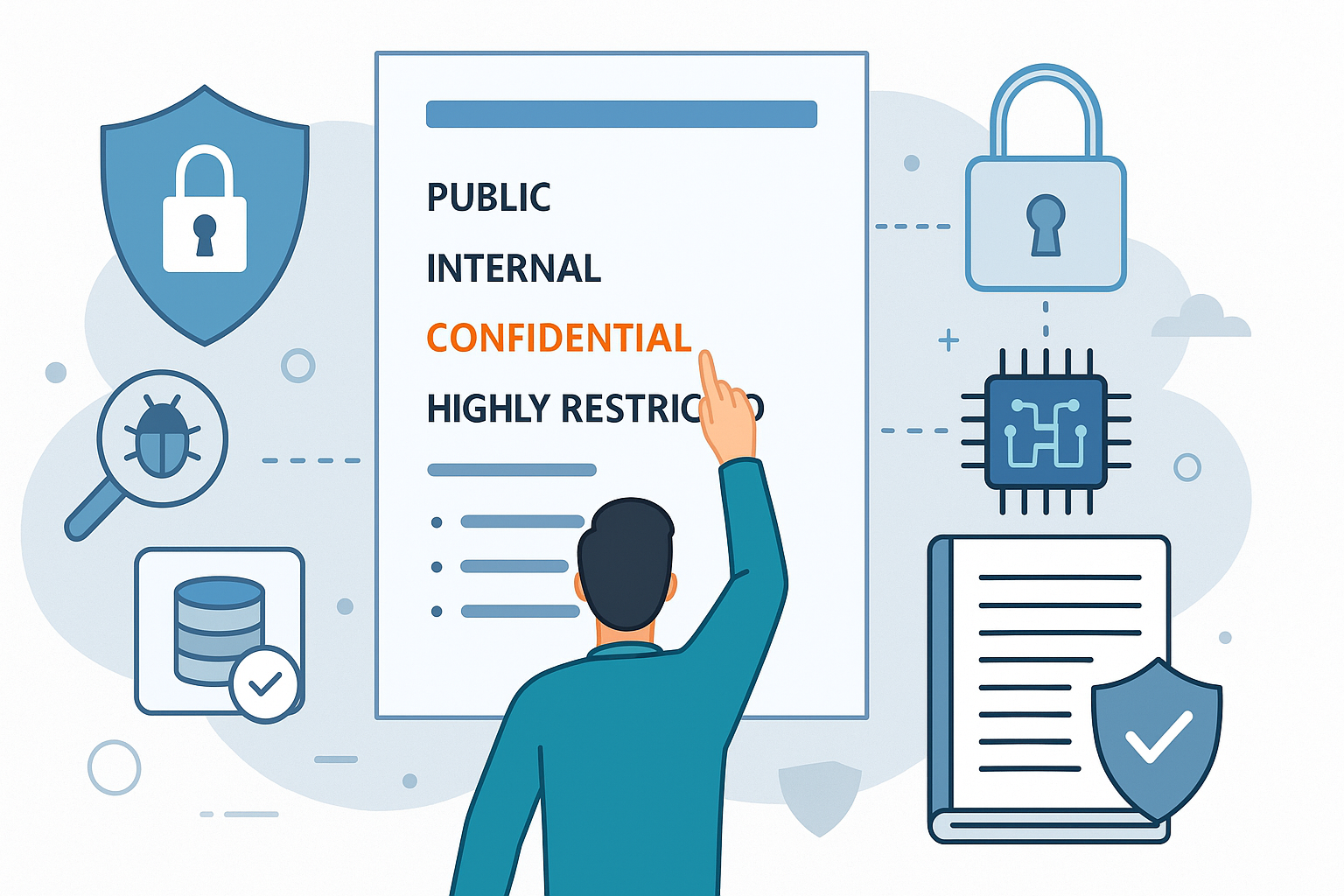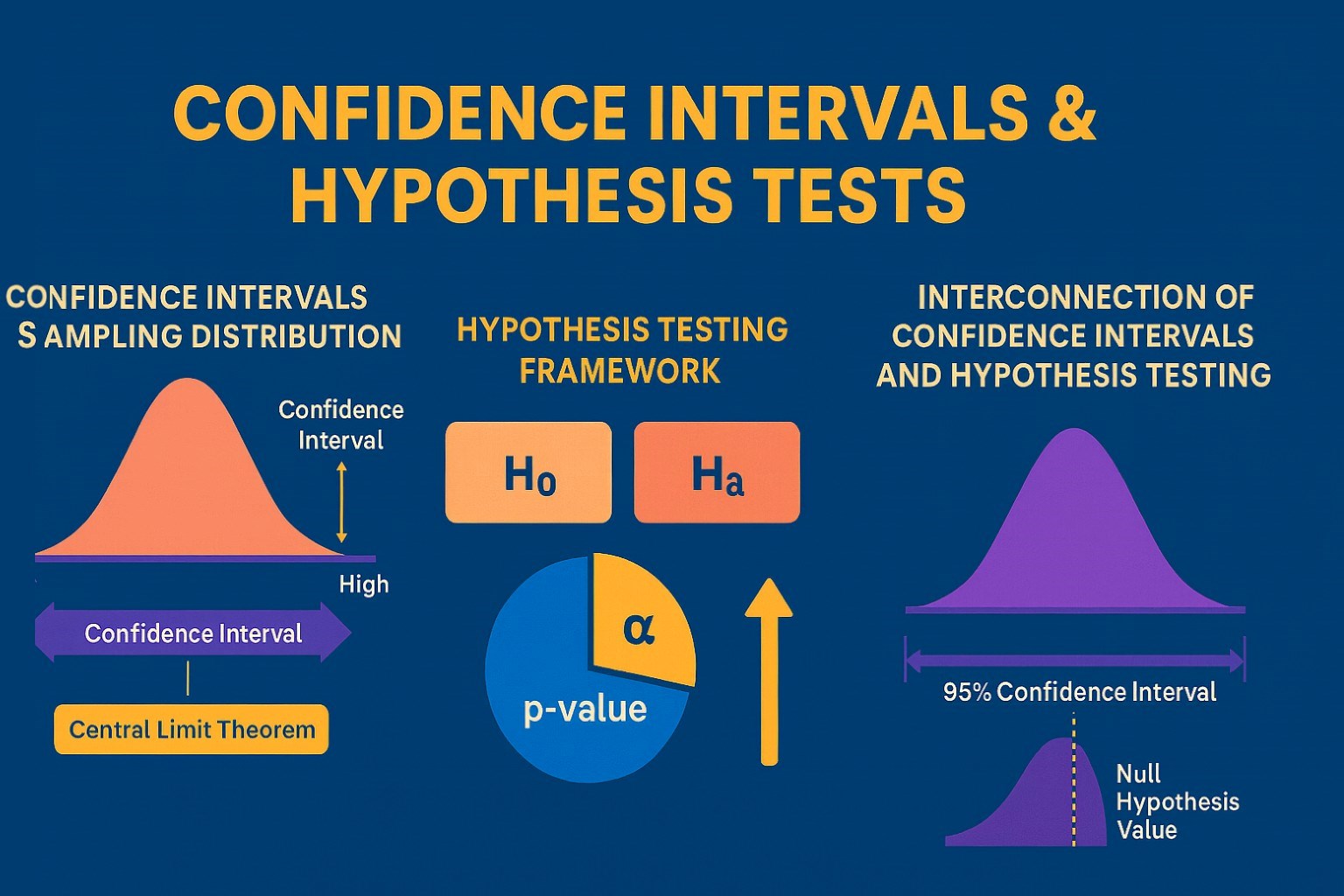Debugging, Testing, and Monitoring in Force.com: A Comprehensive Guide

Ensuring the reliability and efficiency of Force.com code execution is paramount for successful application development. Here's a detailed exploration of the techniques and tools available for debugging, testing, and monitoring in the Force.com environment.
Debugging Force.com Code
Debug Logs
Description: Debug logs offer comprehensive insights into executing one's code, encompassing variables, method calls, and encountered issues
Usage: Enable debug logs for specific users, apex classes, or triggers through Salesforce Setup.
System. debug Statements:
Description: Integrating debug statements in Apex code provides the capability to generate messages directed to the debug log.
Usage: Useful for printing variable values and custom messages during code execution.
Developer Console
Description: The Salesforce Developer Console is an integrated development environment (IDE) that facilitates the execution and debugging of Apex code for developers.
Usage: Set breakpoints, inspect variables, and view real-time debug logs.
Checkpoints
Description: Using the Developer Console, one may add checkpoints and specific lines of code that force the execution to pause for inspection.
Usage: Useful for selectively debugging particular sections of code.
Testing Force.com Code
Apex Test Classes
Description: Apex test classes are written to test Apex code. Test methods ensure that code executes as expected and adheres to requirements.
Usage: Minimum test coverage is required for code deployment, and test classes are crucial for Salesforce development.
Test Data Factory
Description: Consistent test environments are ensured by creating test data programmatically.
Usage: Use utility methods to generate test records and maintain data integrity during testing.
Testing Best Practices
Description: Follow best practices for writing practical test classes, including $$isTest, bulk testing, and proper data isolation.
Usage: Ensures test stability and reliable results.
Salesforce Test Automation Tools
Description: Unit and end-to-end testing can be automated with tools like Salesforce DX, Selenium, and Provar.
Usage: Automate repetitive testing tasks, improve efficiency, and enhance test coverage.
Monitoring Force.com Code Execution
Event Monitoring
Description: The primary objective of event monitoring is to collect user behavior and system occurrences data. This provides us with a valuable understanding of application performance and user behavior.
Usage: Monitor events related to Apex executions, SOQL queries, API calls, and more.
Health Check and Code Scanner
Description: The Salesforce Health Check and Code Scanner is designed to identify security vulnerabilities, assess compliance with best practices, and detect any issues within your code.
Usage: Regularly run these tools to maintain code quality and security.
Performance Monitoring
Description: Salesforce provides tools like Query Plan and Execution Overview in the Developer Console to help analyze SOQL query performance and code execution.
Usage: Identify and optimize slow-performing code to enhance application responsiveness.
Third-Party Monitoring Tools
Description: Third-party tools like New Relic or AppDynamics offer advanced monitoring capabilities, including real-time performance metrics and error tracking.
Usage: Use these tools for in-depth analysis and proactive issue resolution.
Continuous Integration and Deployment
Salesforce DX
Description: Salesforce DX streamlines the development, testing, and deployment process.
Usage: Implement CI/CD pipelines for automated testing and deployment.
Version Control Systems
Description: Use version control systems like Git to manage code changes, track history, and collaborate in a team environment.
Usage: Ensure code integrity, versioning, and collaboration.
Jenkins and Other CI/CD Tools
Description: CI/CD tools automate testing and deployment, reducing manual errors and improving release efficiency.
Usage: Implement Jenkins or similar tools for automated testing and deployment.
In conclusion, effective debugging, testing, and monitoring are integral to developing robust and reliable applications on the Force.com platform. Utilizing a combination of native Salesforce tools, development best practices, and third-party solutions ensures code quality, performance, and a seamless development lifecycle. Regularly incorporating these techniques into your development workflow contributes to the overall success of your Force.com projects.
Find a course provider to learn Salesforce
Java training | J2EE training | J2EE Jboss training | Apache JMeter trainingTake the next step towards your professional goals in Salesforce
Don't hesitate to talk with our course advisor right now
Receive a call
Contact NowMake a call
+1-732-338-7323Take our FREE Skill Assessment Test to discover your strengths and earn a certificate upon completion.
Enroll for the next batch
Salesforce Course Online Training
- Dec 17 2025
- Online
Salesforce Course Online Training
- Dec 18 2025
- Online
Salesforce Course Online Training
- Dec 19 2025
- Online
Related blogs on Salesforce to learn more

INTRODUCTION TO CLINICAL RESEARCH
Learn the fundamentals of clinical trials, and eight phases of the clinical research process.

Describe when and why to use the Force.com code
Discover how to leverage the power of Apex code to automate business processes, enhance user experience, and improve data quality in your Salesforce organization.

Features of Force.com code and distinguish between Force.com code and other programming languages.
Learn how to seamlessly integrate Force.com pages into your Salesforce applications to enhance user experience and discover the steps to create, customize, and deploy custom pages that meet your specific business needs.

List and Describe Syntax Features of Force.com Code
Master the syntax features of Force.com code and description for each feature.
An Introduction: Integrating with the Salesforce Force.com Platform
Unlock the full potential of your Salesforce implementation by integrating it with external systems and applications.

Describe How to Incorporate Force.com Pages into Force.com Applications
Learn how to seamlessly integrate Force.com pages into your Salesforce applications to enhance user experience and discover the steps to create, customize, and deploy custom pages that meet your specific business needs.

Describe the save execution order and use of before and after triggers
Learn how to write triggers that execute at the right time to meet your specific business needs
A Comprehensive Guide to Managing Static Resources in Salesforce
We have discussed the types of Static Resources, how to Create & Use Static Resources and best Practices for Managing Static Resources in Salesforce
Introduction to Force.com Sites – Overview
Learn about the features, benefits, and use cases for Force.com Sites, and discover how to create a custom website that integrates with your Salesforce data and workflows.
Distinguish between standard controllers, custom controllers, and extensions
This guide covers the features, benefits, and use cases for each type of controller, helping you to build more efficient and effective Salesforce applications.
Latest blogs on technology to explore

From Student to AI Pro: What Does Prompt Engineering Entail and How Do You Start?
Explore the growing field of prompt engineering, a vital skill for AI enthusiasts. Learn how to craft optimized prompts for tools like ChatGPT and Gemini, and discover the career opportunities and skills needed to succeed in this fast-evolving indust

How Security Classification Guides Strengthen Data Protection in Modern Cybersecurity
A Security Classification Guide (SCG) defines data protection standards, ensuring sensitive information is handled securely across all levels. By outlining confidentiality, access controls, and declassification procedures, SCGs strengthen cybersecuri

Artificial Intelligence – A Growing Field of Study for Modern Learners
Artificial Intelligence is becoming a top study choice due to high job demand and future scope. This blog explains key subjects, career opportunities, and a simple AI study roadmap to help beginners start learning and build a strong career in the AI

Java in 2026: Why This ‘Old’ Language Is Still Your Golden Ticket to a Tech Career (And Where to Learn It!
Think Java is old news? Think again! 90% of Fortune 500 companies (yes, including Google, Amazon, and Netflix) run on Java (Oracle, 2025). From Android apps to banking systems, Java is the backbone of tech—and Sulekha IT Services is your fast track t

From Student to AI Pro: What Does Prompt Engineering Entail and How Do You Start?
Learn what prompt engineering is, why it matters, and how students and professionals can start mastering AI tools like ChatGPT, Gemini, and Copilot.

Cyber Security in 2025: The Golden Ticket to a Future-Proof Career
Cyber security jobs are growing 35% faster than any other tech field (U.S. Bureau of Labor Statistics, 2024)—and the average salary is $100,000+ per year! In a world where data breaches cost businesses $4.45 million on average (IBM, 2024), cyber secu

SAP SD in 2025: Your Ticket to a High-Flying IT Career
In the fast-paced world of IT and enterprise software, SAP SD (Sales and Distribution) is the secret sauce that keeps businesses running smoothly. Whether it’s managing customer orders, pricing, shipping, or billing, SAP SD is the backbone of sales o

SAP FICO in 2025: Salary, Jobs & How to Get Certified
AP FICO professionals earn $90,000–$130,000/year in the USA and Canada—and demand is skyrocketing! If you’re eyeing a future-proof IT career, SAP FICO (Financial Accounting & Controlling) is your golden ticket. But where do you start? Sulekha IT Serv

Train Like an AI Engineer: The Smartest Career Move You’ll Make This Year!
Why AI Engineering Is the Hottest Skillset Right Now From self-driving cars to chatbots that sound eerily human, Artificial Intelligence is no longer science fiction — it’s the backbone of modern tech. And guess what? Companies across the USA and Can

Confidence Intervals & Hypothesis Tests: The Data Science Path to Generalization
Learn how confidence intervals and hypothesis tests turn sample data into reliable population insights in data science. Understand CLT, p-values, and significance to generalize results, quantify uncertainty, and make evidence-based decisions.